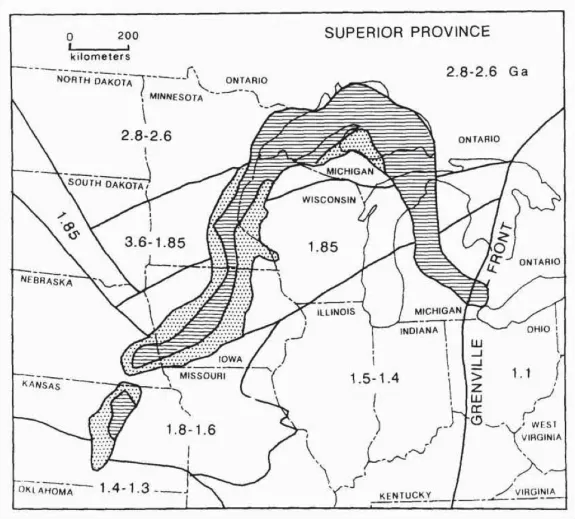America Was Almost Two Separate Continents
The east and the west were nearly different continents
/https://tf-cmsv2-smithsonianmag-media.s3.amazonaws.com/filer/4e/86/4e86b49b-bfc0-442a-8bf2-47f386b53313/screen_shot_2014-01-08_at_125812_pm.png)
Roughly 1.1 billion years ago, America tried to rip itself in half.
The Midcontinental Rift System nearly created a continent far different than the one we know today. A nearly 2,000 mile gash in the Earth undercut the Great Lakes. This could have been the seed for a new ocean. The rift began splitting Michigan in two, wrenching Wisconsin and Minnesota apart, and bisecting the Midwestern states. It would have been the source of new earth, as lava pumped up from deep within the planet. As new crust formed in the rift, the eastern and western chunks of North America would have been pushed apart, an ocean filling in the gap.
But, for some reason, the rift failed, says Nature:
It opened a 3,000-kilometre crack in North America and created a basin as big, perhaps, as the Red Sea — then the system shut down. The wound stopped growing and the continent remained intact.
America got to stay as one. But the scar is still there: buried beneath younger layers of boulders and sand, the copper- and nickel-rich rocks, the signs of long-cooled lava—the traces of what could have been.

More from Smithsonian.com:
/https://tf-cmsv2-smithsonianmag-media.s3.amazonaws.com/accounts/headshot/smartnews-colin-schultz-240.jpg)
/https://tf-cmsv2-smithsonianmag-media.s3.amazonaws.com/accounts/headshot/smartnews-colin-schultz-240.jpg)